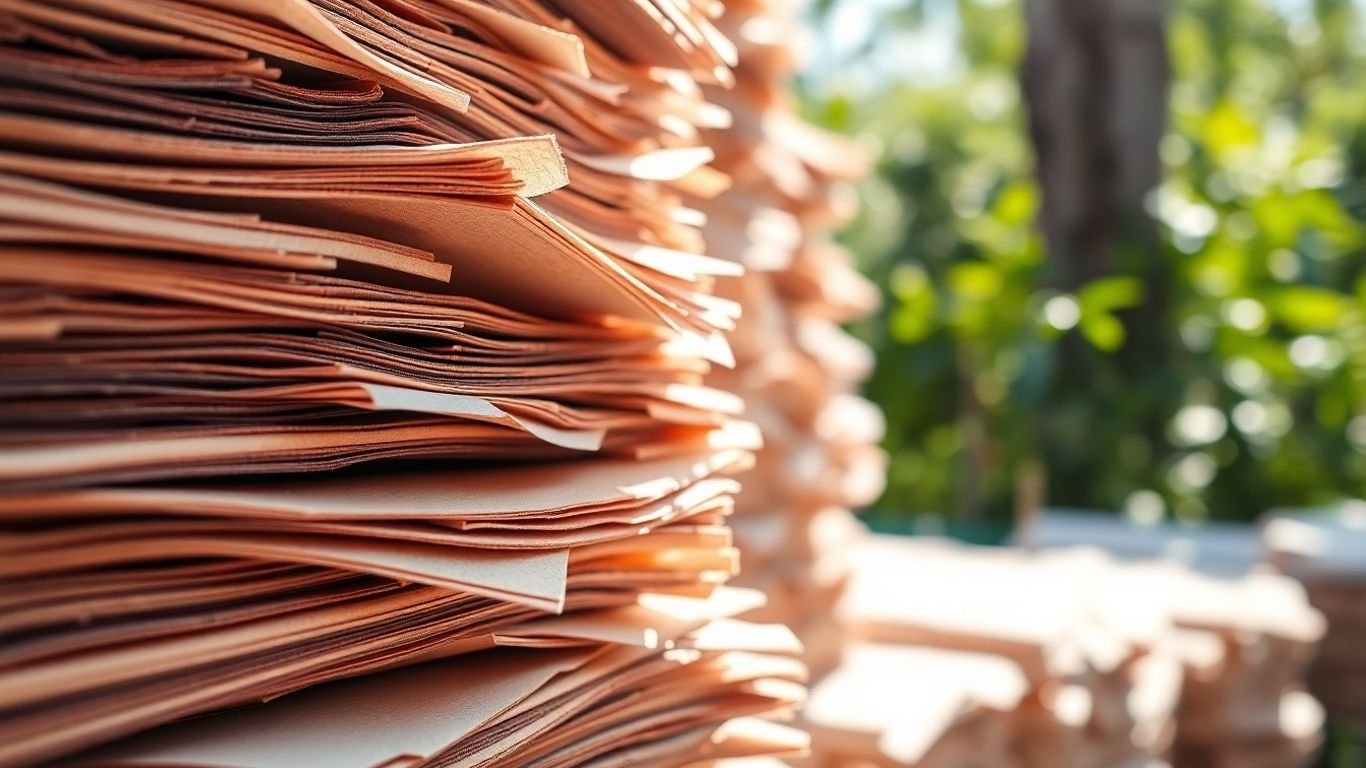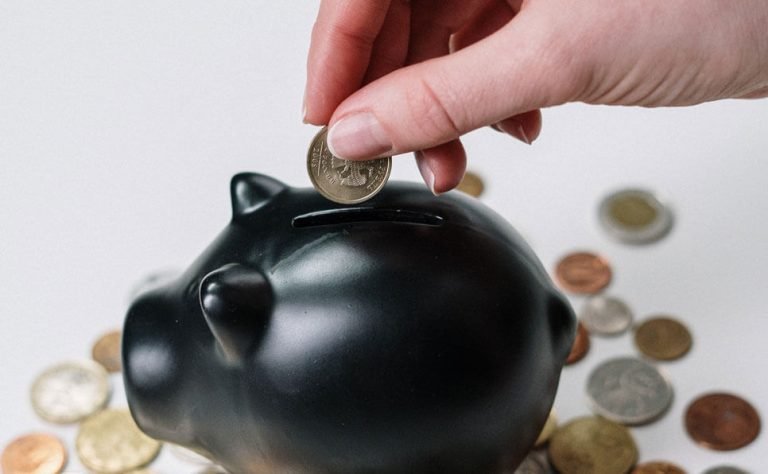Paper Recycling Trends and Innovations to Watch in 2025

Paper recycling is changing a lot, and 2025 looks like a big year for new ideas and shifts. It’s not just about tossing paper in a bin anymore. We’re seeing smart tech, new rules, and a whole different way of thinking about what we throw away. This article looks at the main Paper Recycling Trends and innovations you should keep an eye on. It’s all about making things work better and being kinder to the planet.
Key Takeaways
- Sorting is getting way smarter. Think AI and machines that can tell different types of paper apart with amazing accuracy. This means less waste and more usable material.
- New rules, especially in Europe, are pushing for more packaging to be recyclable and to include recycled stuff. This is a big deal for how products are made and what happens to them after.
- We’re starting to look at recycling more than just the usual suspects. Things like special paper products and even some tricky plastics are becoming easier to recycle, which is great news.
- The whole idea of a ‘circular economy’ is really taking off. It means we’re trying to use things over and over instead of just making and tossing them. This affects everything from how products are designed to what we expect from recycled materials.
- Companies are really focused on cutting down their carbon footprint. This means cleaner energy for recycling plants and greener trucks, all part of making recycling more sustainable.
Advancements in Sorting Technologies

Sorting is kind of the gatekeeper of the whole recycling process, right? If you can’t sort it properly, it’s just trash. Luckily, things are getting way smarter in this area. We’re seeing some pretty cool tech that’s making it easier to pull out the good stuff from the mixed-up piles.
Machine Learning for Enhanced Sorting Accuracy
This is where artificial intelligence, specifically machine learning, is really starting to shine. Think of it like teaching a computer to see and understand what it’s looking at, much like we do. These systems use cameras to identify objects based on their shape, size, and even texture. This allows for the separation of materials that used to be really tricky, like different types of plastics or even textiles, from the main paper stream. It’s not just about telling paper from plastic anymore; it’s about getting much more granular. This means less contamination and a higher quality of recycled material.
Real-Time Monitoring and Data Analytics
Another big step forward is the ability to watch what’s happening in the sorting facility as it happens. Instead of just guessing how well things are going, we can now get live data. Platforms are popping up that collect information directly from the sorting machines. This lets operators see exactly what’s being sorted, how quickly, and if there are any bottlenecks. It’s like having a dashboard for your recycling plant. This kind of information is super helpful for making quick adjustments and improving the overall efficiency of the operation.
Having this constant stream of data means we can catch problems early and make sure the sorting process is running as smoothly as possible. It’s all about making informed decisions based on what’s actually happening on the ground, not just what we hope is happening.
Digital Twins for Operational Optimization
This one sounds a bit futuristic, but it’s becoming a real thing. A
Regulatory Drivers and Policy Shifts
Governments and international bodies are really starting to flex their muscles when it comes to waste and recycling. It’s not just about asking nicely anymore; there are actual rules and goals being put in place that are changing how businesses operate. This shift is pushing the industry towards more responsible practices, and it’s something everyone involved needs to pay attention to.
Impact of the European Packaging and Packaging Waste Regulation
The European Union’s Packaging and Packaging Waste Regulation (PPWR) is a big deal. It’s not just a suggestion; it’s a set of legally binding targets for packaging. The main idea is to make packaging more sustainable, reduce waste, and boost recycling rates across all member states. This means companies selling products in Europe have to rethink their packaging. They’re looking at things like:
- Reducing the amount of packaging used overall. Less material means less waste to deal with.
- Making packaging easier to recycle. This involves using materials that are actually collected and processed by recycling facilities, and avoiding mixed materials that are hard to separate.
- Increasing the use of recycled content. The regulation sets specific targets for how much recycled material must be in new packaging.
- Improving labeling so consumers know how to dispose of packaging correctly.
This regulation is forcing innovation and investment in better packaging solutions. It’s a clear signal that the era of excessive, hard-to-recycle packaging is coming to an end in Europe.
Growth of Extended Producer Responsibility Programs
Extended Producer Responsibility (EPR) is gaining serious traction. The basic idea is that the companies that make or sell products are responsible for what happens to those products after consumers are done with them. This is a pretty significant change from the old way of thinking where waste management was solely a public service problem. EPR programs are being rolled out for all sorts of products, not just packaging. For paper and cardboard, this means:
- Producers fund recycling infrastructure: Companies might pay fees that go directly towards improving collection, sorting, and processing facilities for paper products.
- Incentives for better design: If a product’s packaging is easier to recycle, the producer might pay lower fees. This encourages designing for recyclability from the start.
- Clearer accountability: EPR puts the onus on the businesses that profit from selling products to also manage their end-of-life impact.
Oregon, for example, has been looking into
Focus on Material Stream Innovation
It’s not just about the usual suspects anymore when it comes to paper recycling. We’re seeing a real push to look beyond just cardboard boxes and newspapers. This means getting creative with what we consider ‘recyclable’ and how we design products from the get-go.
Exploring Lesser-Known Recyclable Materials
Think about it: what else can we actually recycle that we might not be thinking about? There’s a growing interest in materials that haven’t traditionally been part of the paper recycling stream. This includes things like certain types of coated papers that used to be a problem, or even exploring how to process paper products made from non-wood fibers. Some startups are even experimenting with materials like stone paper, which is made from calcium carbonate and industrial waste. It’s pretty wild stuff, but it points to a future where we’re much more resourceful.
- Bio-based nanocomposites: These are being developed from waste paper, offering new possibilities for material use.
- Stone paper: Made from recycled industrial waste, it’s durable and water-resistant.
- Non-wood fibers: Materials like polypropylene and cellulose nanofibers are being used to create paper alternatives with improved durability.
The drive to find new uses for waste materials is pushing the boundaries of what’s possible in paper production. It’s about seeing potential where we previously saw only trash.
Innovations in Paper-Based Product Design
Design is playing a huge role here. Companies are starting to think about recyclability right from the drawing board. This means creating products that are easier to break down and reprocess. For example, we’re seeing more single-material designs, like fiber-based mono-material designs, which simplifies the sorting process at recycling facilities. It’s a shift from just making things out of paper to making things out of paper that can actually be recycled effectively.
Enhanced Recyclability of Plastics
Okay, this might sound a bit odd in an article about paper recycling, but hear me out. Many paper products now have plastic components, like coatings or labels. The push for better plastic recyclability directly impacts the paper stream. If those plastic bits can be easily recycled, they don’t contaminate the paper recycling process. Regulations are really pushing this, demanding higher percentages of recycled content in plastic packaging. This means innovations in plastic recycling tech are indirectly helping paper recycling efforts by cleaning up the overall waste stream.
The Rise of the Circular Economy
It feels like everywhere you look these days, people are talking about the circular economy. It’s more than just a buzzword; it’s a whole new way of thinking about how we use stuff. Instead of the old ‘take-make-dispose’ model, which is really just a fancy way of saying ‘use it and throw it away,’ we’re shifting towards a system where things are designed to be used again and again. This means less waste piling up in landfills and a lot less pressure on our planet’s resources. The goal is to keep materials in use for as long as possible, getting the most value out of them before they’re eventually recycled or repurposed.
Shifting Perspectives on Waste and Resources
Think about it: for a long time, waste was just… waste. Something to get rid of. But now, we’re starting to see that ‘waste’ is actually just resources in the wrong place. Garbage trucks might soon be doing more than just hauling trash; they could be collecting valuable materials to send back to manufacturers. This also means designers and companies need to rethink how they make things. They’re starting to look at recycled materials not as second-best options, but as perfectly good raw materials. It’s a big change from the old days of planned obsolescence, where products were made to break down so you’d buy new ones. Now, the focus is on making things that last.
The idea is to close the loop. Instead of a straight line from production to disposal, we’re aiming for a circle where products and materials are constantly reused and recycled. This not only helps the environment but can also create new economic opportunities.
Circular Economy Models in Practice
We’re seeing this shift happen in real ways. Countries like Vietnam and China are putting policies in place to encourage recycling and reusing materials. Companies are starting to design products with their end-of-life in mind, making them easier to take apart and recycle. It’s not just about big government plans, either. Local communities are getting involved with recycling drives and programs, making it easier for everyone to participate. It’s a collective effort, really.
Here’s a look at how some regions are approaching it:
- European Union: The Circular Economy Action Plan is pushing for more sustainable products and making sure resources stay within the EU economy.
- Asia: Countries like Vietnam are adopting a ‘make-use-recycle’ approach, and China is focusing on green design and renewable resources.
- Local Initiatives: Community-led programs are becoming more common, helping to boost recycling rates and raise awareness.
Increased Demand for Recycled Content
As more companies embrace circular economy principles, they’re also looking for more recycled materials to use in their products. This creates a stronger market for recycled goods. Big names like Unilever, Coca-Cola, and Nestlé are already increasing their use of recycled content as part of their sustainability goals. This demand is a powerful driver for better recycling infrastructure and more innovation in how we process and use recycled materials. It’s a positive feedback loop: more demand leads to better recycling, which in turn fuels more demand.
Sustainability and Decarbonization Efforts

Decarbonization Goals in Material Recycling
It’s becoming really clear that cutting down on carbon emissions isn’t just a nice-to-have anymore; it’s a must-do for the recycling industry. Think about it – making new stuff from scratch uses a ton more energy and creates way more pollution than using recycled materials. So, the push is on to make recycling itself greener. This means looking at everything from the energy used in processing plants to the fuel burned by collection trucks. The goal is to shrink the overall carbon footprint of recycling, making it a true solution for a healthier planet.
The EPA has set a national target to slash the climate impact from producing, using, and disposing of materials by up to 50% by 2030. This is a big deal and will push a lot of changes across the board.
Community-Driven Recycling Initiatives
Recycling isn’t just about big companies and fancy tech; it’s also about what happens in our neighborhoods. More and more, we’re seeing communities step up to make recycling work better for everyone. This often means focusing on making sure everyone, especially those in areas that have historically been overlooked, has a fair shot at recycling services. It’s about building programs that not only reduce waste but also make our local environments cleaner and healthier.
- Improving access to recycling services for all residents.
- Reducing pollution in local areas.
- Encouraging community members to get involved in planning and implementing recycling strategies.
These local efforts are key to making recycling a success. When people feel connected to the process and see the direct benefits in their own communities, they’re more likely to participate and support recycling programs.
Fleet Evolution Towards Sustainable Operations
When you think about recycling, you probably picture bins and sorting machines. But a huge part of the process is getting the materials from point A to point B, and that means trucks. The vehicles used for collecting and transporting recyclables are getting a serious makeover. We’re talking about moving away from old-school diesel engines towards electric vehicles, or those that run on cleaner fuels like compressed natural gas. This shift is a major step in cutting down on emissions from the waste management sector.
Here’s a look at what’s happening with recycling fleets:
| Vehicle Type | Current Status | Future Trend |
|---|---|---|
| Diesel Trucks | Dominant | Phased out |
| Electric Trucks | Emerging | Increasing adoption |
| CNG/Renewable Natural Gas Trucks | Growing | Significant investment |
Automating some of the collection and routing processes can also help make these fleets more fuel-efficient, saving money and reducing emissions even further.
Technological Integration in Recycling
It’s pretty wild how much technology is changing the recycling game. Things that seemed like science fiction a few years ago are now becoming pretty standard. We’re seeing a lot more smart systems and automation popping up, and honestly, it’s making a big difference in how efficiently we can sort and process materials. It’s not just about throwing things into a big machine anymore; it’s way more sophisticated.
AI and Robotics in Waste Management
Artificial intelligence, especially deep learning, is really stepping up. It’s like giving machines super-powered eyes. These systems can now recognize and sort items with incredible accuracy, even tricky things like opaque white packaging or thin foils that used to be a headache. They’re not just sorting by material type anymore, but by shape, size, and other visual cues. This means less contamination in the recycled output and more valuable materials getting a second life. Robots are also getting involved, especially in areas like e-waste, where they can carefully extract valuable components that humans might miss or find too difficult to handle.
Smart Paper and Advanced Packaging
Paper recycling is getting smarter too. Think about packaging designed from the ground up to be easily recycled. This includes things like removing problematic coatings or using materials that break down better. We’re also seeing more ‘smart’ paper products that might have embedded sensors or unique identifiers, which could eventually help with tracking and sorting, though that’s still pretty cutting-edge. The goal is to make sure that when we toss that cardboard box or paper cup, it actually has a good chance of being turned into something new.
RFID for Improved Material Identification
Radio-Frequency Identification (RFID) tags are starting to show up more in the recycling world. These tiny tags can be attached to items or containers, and they broadcast information when scanned. This could be a game-changer for tracking where materials come from and where they go. Imagine a system that knows exactly what type of plastic a bottle is made of just by scanning an RFID tag. It makes sorting much more precise and helps create cleaner streams of recycled materials. It’s still early days for widespread use in everyday packaging, but the potential for improving traceability and reducing errors is huge.
Looking Ahead: What’s Next for Paper Recycling?
So, as we wrap things up, it’s pretty clear that paper recycling isn’t just about tossing old newspapers into a blue bin anymore. Things are getting way more interesting. We’re seeing smart tech like AI helping sort stuff better, and big rules coming out, especially in Europe, that are pushing companies to use more recycled materials. Plus, there’s a real push to figure out how to recycle things we haven’t paid much attention to before. It feels like we’re on the edge of some cool new ideas that could make a big difference in how we handle waste and keep our planet a bit cleaner. It’s definitely a space to keep an eye on in 2025 and beyond.
Frequently Asked Questions
What’s new in how paper is sorted for recycling?
Recycling centers are using smarter technology, like computers that learn (AI), to sort paper more accurately. They can now tell the difference between many types of paper and even spot things that shouldn’t be there. This helps make sure more paper gets recycled properly and less good paper ends up as trash.
Are there new rules about recycling paper and packaging?
Yes, many places are creating stricter rules. For example, Europe has new laws that require more packaging to be recyclable and to include more recycled materials. These rules push companies to design products that are easier to recycle and to use recycled stuff in their packaging.
What does the ‘circular economy’ mean for paper recycling?
The circular economy is like a big loop where we try to use things again and again instead of just throwing them away. For paper, this means designing products so they can be easily recycled, using more recycled paper to make new things, and thinking of old paper as a valuable resource, not just trash.
How is recycling paper helping the environment?
Recycling paper saves trees, water, and energy. It also means less trash goes into landfills. Many recycling companies are also working to reduce their carbon footprint, which is the amount of greenhouse gases they release, by using cleaner energy and more efficient trucks.
What are some surprising things that can be recycled now?
Besides regular paper, scientists and companies are finding ways to recycle more types of paper-based products and even some tricky plastics. They are also looking at materials that weren’t easily recycled before, trying to find ways to make them part of the recycling loop.
How is technology like AI and robots used in recycling?
Artificial intelligence (AI) and robots are helping recycling plants sort materials much faster and more accurately than before. They can identify different materials, remove contaminants, and even help track where materials go, making the whole recycling process more efficient and reliable.






